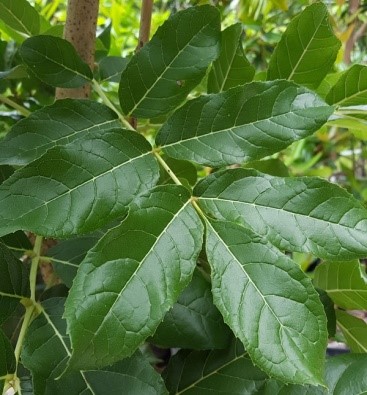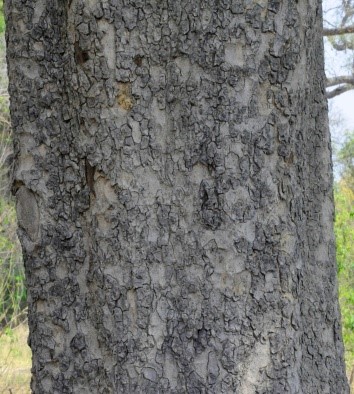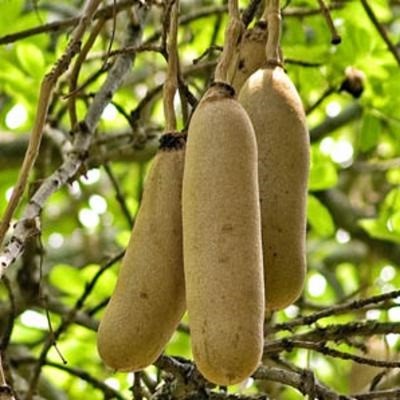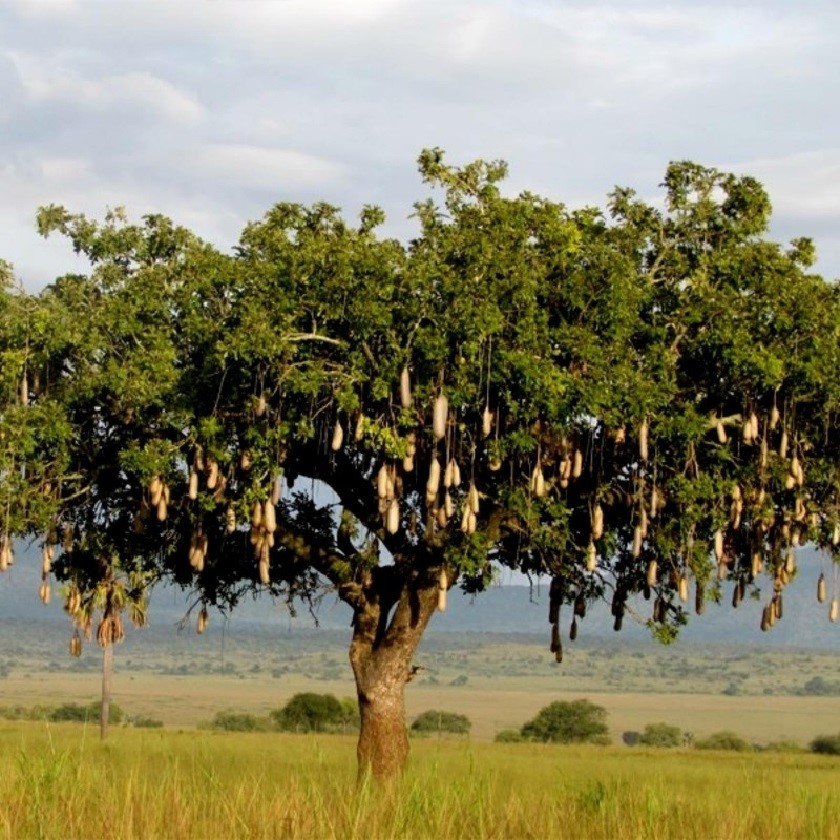Trees
Kigelia pinnata L.
Kigelia pinnata L.
Description :
This species is to up 25m tall with
usually broad and rounded crown. Leaves are opposite and are in whorls of 3.
The bark is smooth and grey in the start, peeling on mature trees. It can be as
thick as 6mm on a branch of 15cm diameter branch. The wood is pale brownish or
yellow, not prone to cracking and is undifferentiated. Fruit is sausage shaped
and cylindrical, and up to 1m long and 18cm in diameter. The fruit can weigh up
to several kilograms and look like large sausages.
Distribution :
This plant is native to and widely
distributed throughout continental sub-Saharan Africa. It has been introduced
to several African islands (Madeira, Canary Islands, Cape Verde, Réunion,
Mauritius), the United States (California, Florida and Hawaii), the Caribbean
islands, Central and South America (Mexico, Honduras, El Salvador, Nicaragua,
Costa Rica, Panama, Colombia, Venezuela, French Guiana, Ecuador, Peru and
Brazil), Western Asia (Israel, Iraq), South and Southeast Asia (Pakistan,
India, Maldives, Sri Lanka, Myanmar, Thailand, Laos, Vietnam, China, Taiwan,
Malaysia, Singapore, Indonesia and Philippines), Australia and some Pacific
Islands (New Caledonia, Guam and the Marquesas Islands). They can be found in
rainforests, gallery forests, xerophytic forests, woodlands, and savannahs,
usually on sandy argillaceous soils, at altitudes between 0-2000m.
Uses :
The fruit is poisonous, but it can be
processed for consumption by drying, roasting or fermentation. It can also be
used in a number of skin care products.
The tree is widely grown as an ornamental tree in tropical.
(Dhungana
et al., 2016)



